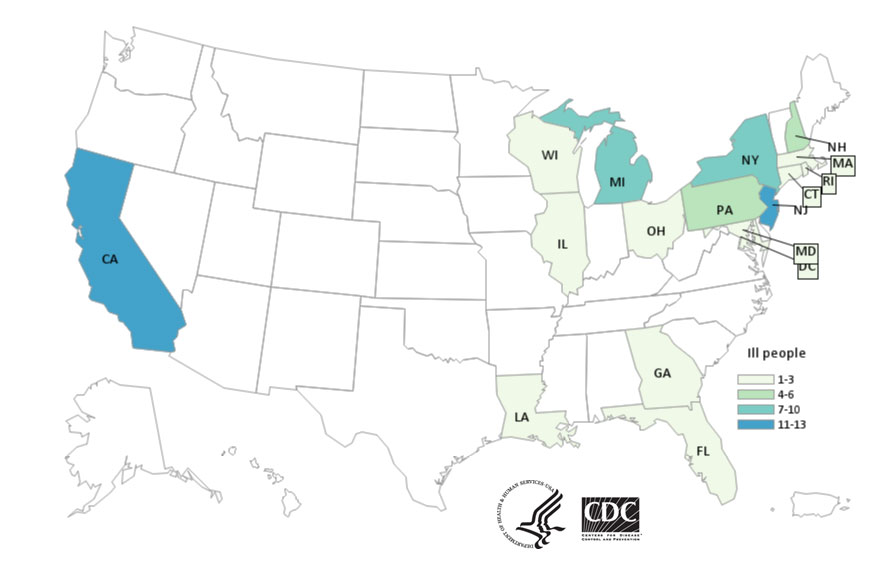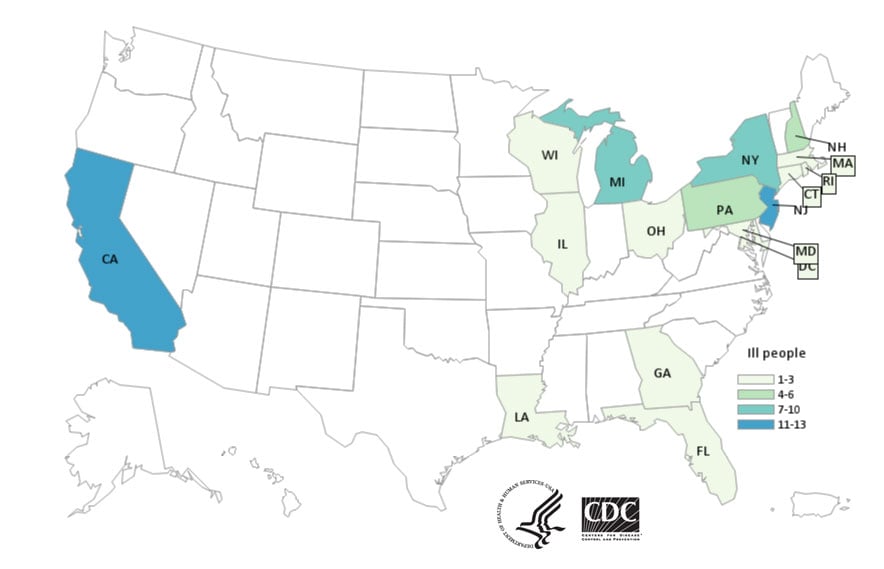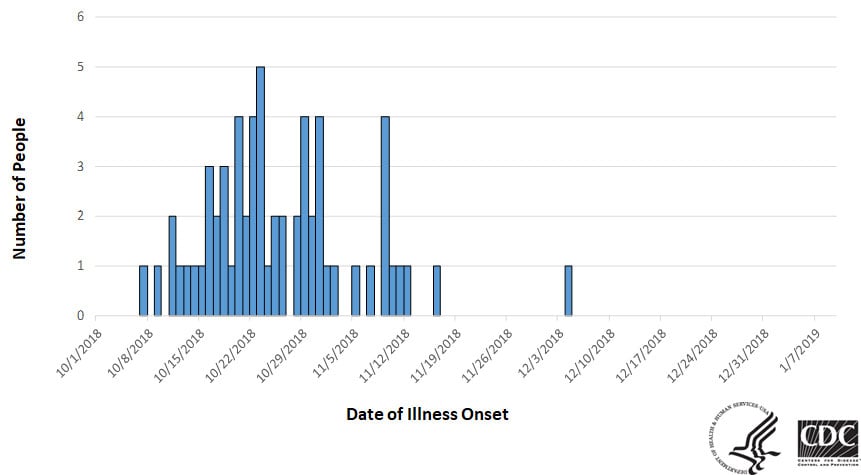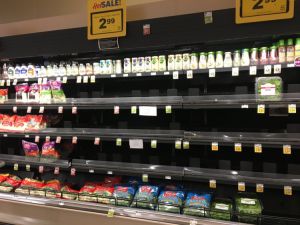
When there’s an outbreak of a food-borne illness numerous teams from numerous agencies jump into action. As a fan of the TV show NCIS I can imagine some of the activities and the conversations that take place are similar to the urgent process of finding a villain.
Of course, I’m sure the real professionals would be insulted by my comparison. This is a very serious activity that can play out over weeks and months and involves meticulous work by experts in a number of fields. It’s no TV show, where complex testing takes minutes and finding links between events and places occur during a break for ads!
 People infected with the outbreak strain of E. coli O157:H7, by state of residence, as of January 9, 2019 (n=62)
People infected with the outbreak strain of E. coli O157:H7, by state of residence, as of January 9, 2019 (n=62)
Let’s take the November 2018 romaine outbreak as an example. Illnesses were identified in early October and continued until early December. There were 62 reported cases across 16 states. Thankfully no deaths were reported, but 25 people were hospitalized.
Once an outbreak is identified the epidemiologists try to identify the exact cause. This usually happens by analyzing stool samples from people who are sick. In this case, the culprit was identified as E. coli O157:H7. This is a reasonably common bacterium found in food-borne illnesses. You might remember this was the villain in the spinach crisis of 2006. Epidemiologists are able to go beyond this classification and use sophisticated DNA testing to identify different fingerprints within this classification. A Romaine outbreak earlier in 2018 was also E. coli O157:H7 but with a different fingerprint.
According to the CDC website, sometimes during outbreak investigations, public health officials conduct a study called a “case-control study.” Officials interview sick people (cases) and healthy people (controls). Then they compare what the two groups ate and the things they did. If you get asked to participate in one of these studies, please do – you’ll be helping with the investigation. The information you share could provide important clues to help disease detectives solve the outbreak and prevent others from getting sick. Keeping food receipts and joining store card programs can also help, as it’s often difficult to remember what we ate and where it was purchased.
 People infected with the outbreak strain of E. coli O157:H7, by date of illness onset
People infected with the outbreak strain of E. coli O157:H7, by date of illness onset
Romaine is a crop that is only grown in certain areas at specific times of the year, so this helped the investigation. Experts were able to identify the central coast growing regions of California as the most likely source. But there are hundreds of acres growing romaine in Central California at that time of the year, and so the experts needed more data to find the specific source.
The FDA began to focus on a farm in Santa Barbara County after an extensive combination of interviews and detailed tracing of the shipping records of romaine from stores and restaurants back to farms. They collected samples from soil, water, equipment and so on and established that the exact strain of E. coli found in the sick people was also present in sediment within an agricultural water reservoir at Adam Brothers Farm.
Following the traceback process, experts must also trace the tainted products forward to ensure they have identified all of the distribution centers, stores, restaurants, schools, hospitals and so on where the product may have ended its journey. With today’s not-quite-standardized labeling and computerized systems, this too can be challenging.
Adam Brothers Farming stopped shipping romaine on November 20, 2018, and issued a recall on December 13. The outbreak was officially declared over by the CDC on January 9, 2019.
 From early October until January (and in some stores much later) there was no romaine to be found. Fresh romaine and pre-packed salads containing romaine disappeared and took some weeks to return. During this period, tons of perfectly good romaine was sent to landfills and all the energy, water and labor required to grow and pack it was wasted.
From early October until January (and in some stores much later) there was no romaine to be found. Fresh romaine and pre-packed salads containing romaine disappeared and took some weeks to return. During this period, tons of perfectly good romaine was sent to landfills and all the energy, water and labor required to grow and pack it was wasted.
While a great deal of science and many highly trained professionals quickly identified this particular outbreak -- and undoubtedly saved lives with their expertise -- the process is still error prone and protracted. Speed to information and connectivity across the supply chain can change that, and that idea motivates our work here at Procurant.
We may not yet be able to wrap up an investigation in the span of an NCIS episode, but we’re getting closer every day.
Lorem ipsum dolor sit amet, consectetur adipiscing elit

These Stories on Food Safety
Procurant USA LLC
475 Alberto Way - Suite 230
Los Gatos, CA 95032
1-669-221-1026
info@procurant.com
